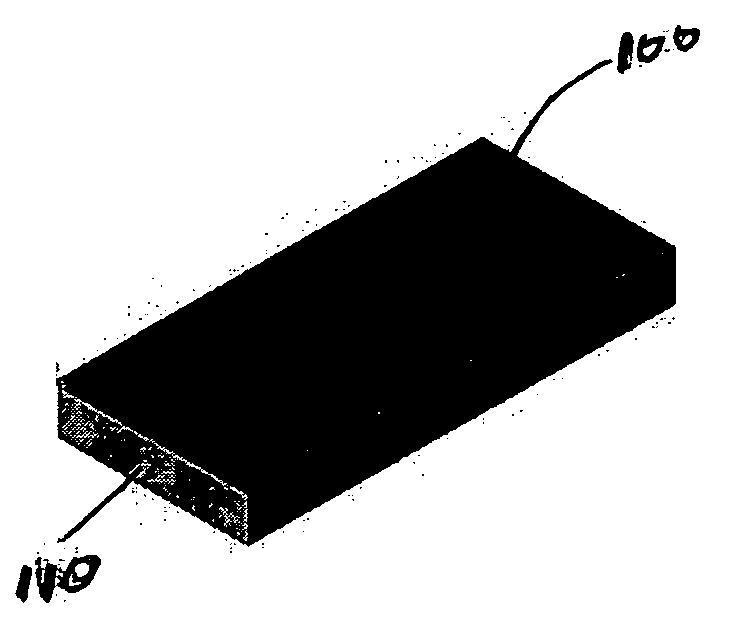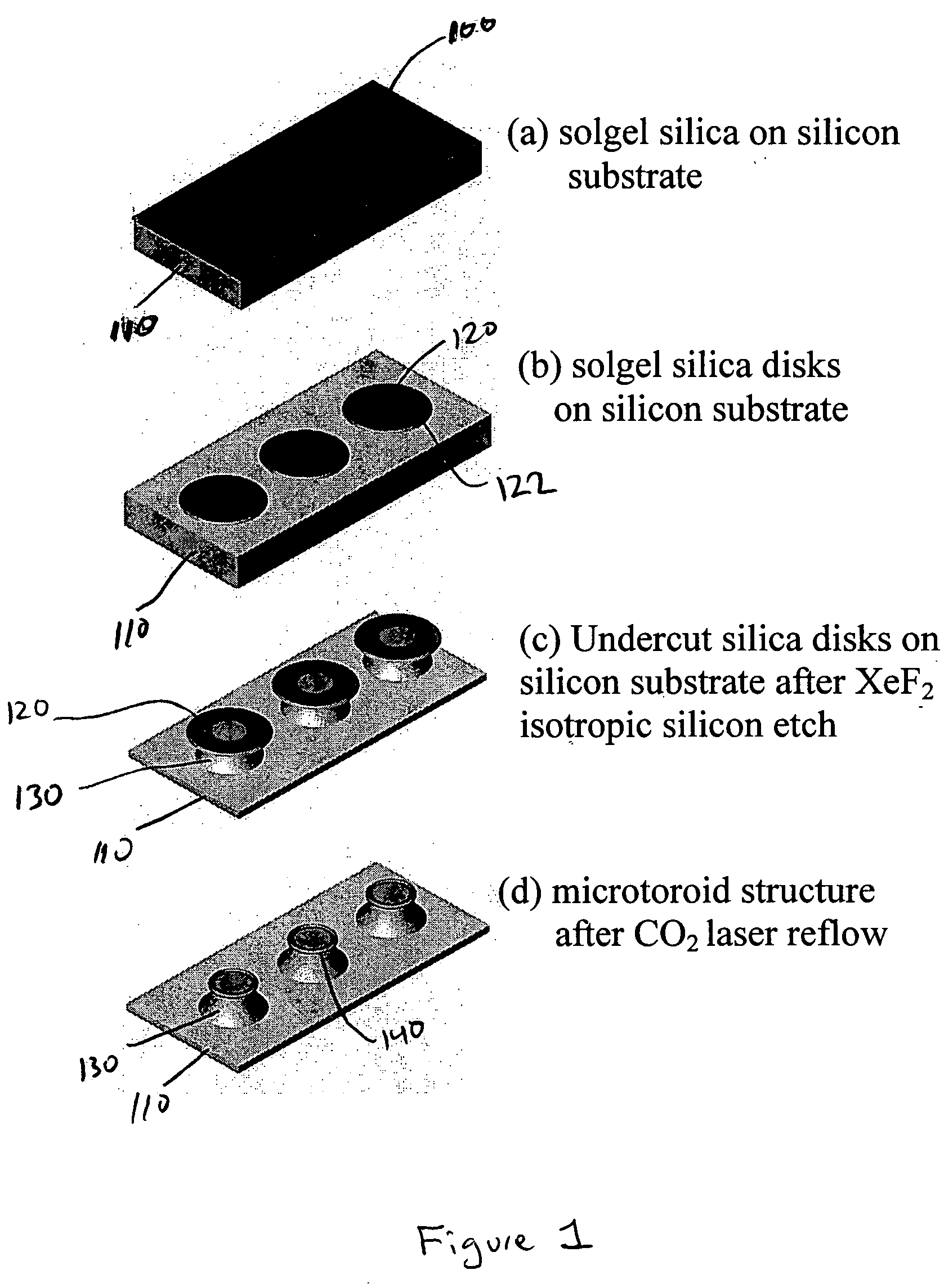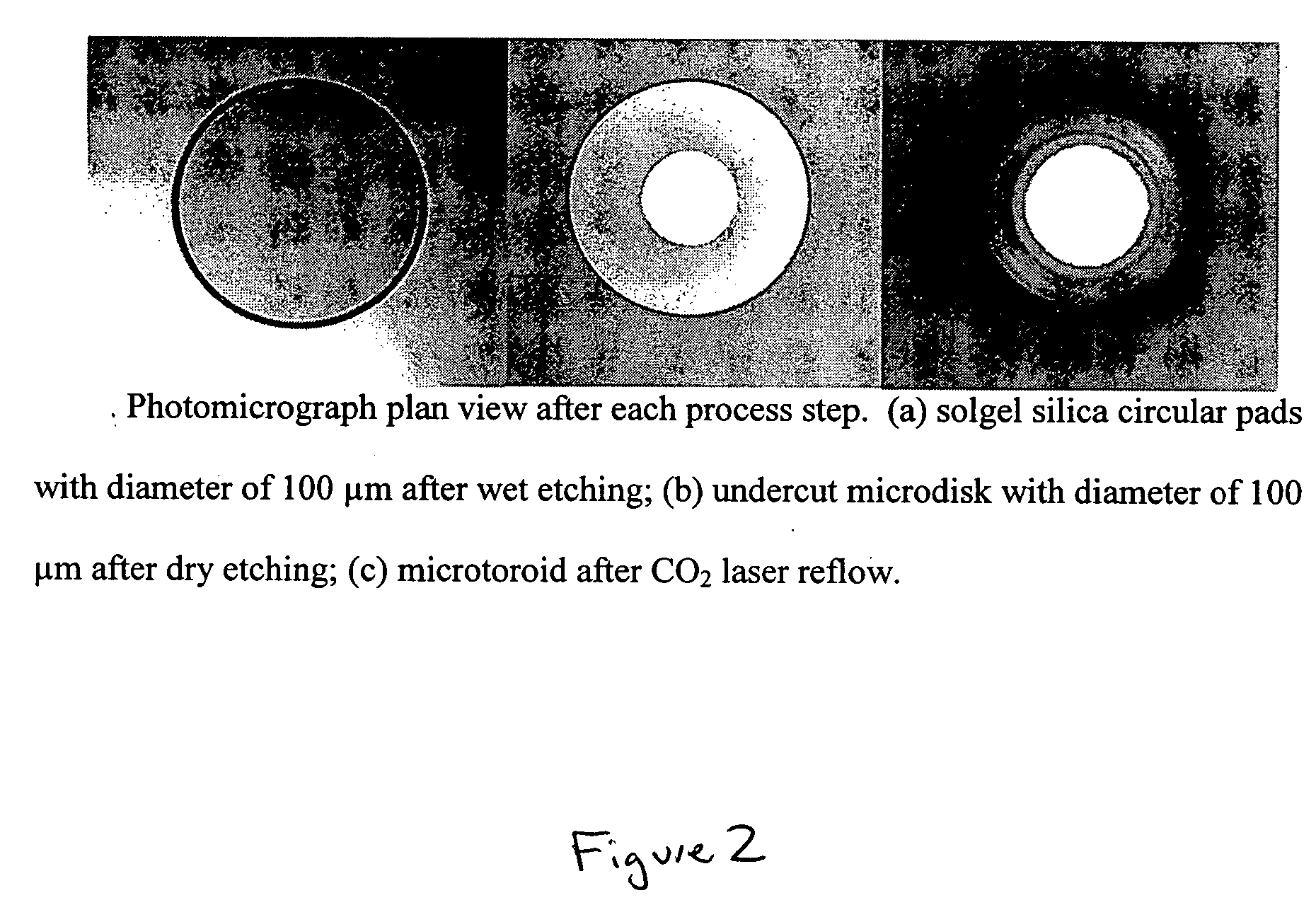Silica sol gel micro-laser on a substrate and method of fabrication
- Summary
- Abstract
- Description
- Claims
- Application Information
AI Technical Summary
Benefits of technology
Problems solved by technology
Method used
Image
Examples
Embodiment Construction
[0028] This specification describes embodiments of sol gel micro-lasers, such as silica sol gel micro-lasers, using undoped and doped sol gel solutions, and methods for making such micro-lasers. In the following description, reference is made to the accompanying drawings, which show by way of illustration, but not limitation, specific embodiments that can be utilized.
[0029] Referring to FIGS. 1 and 2, a silica sol gel solution 100 is applied to a substrate 110, such as a silicon substrate, a wafer or a chip, in order to form a silica sol gel coating. While other substrates can be utilized with various embodiments. This specification generally refers to a silicon substrate for purposes of explanation, but not limitation.
[0030] An etching process is used to form or shape silica sol gel disks 120 from the coating on the substrate 110. After the silica sol gel disks 120 are formed, the silicon substrate 110 is etched. As shown in FIG. 1, sections of the silicon substrate 110 underneat...
PUM
 Login to View More
Login to View More Abstract
Description
Claims
Application Information
 Login to View More
Login to View More - R&D
- Intellectual Property
- Life Sciences
- Materials
- Tech Scout
- Unparalleled Data Quality
- Higher Quality Content
- 60% Fewer Hallucinations
Browse by: Latest US Patents, China's latest patents, Technical Efficacy Thesaurus, Application Domain, Technology Topic, Popular Technical Reports.
© 2025 PatSnap. All rights reserved.Legal|Privacy policy|Modern Slavery Act Transparency Statement|Sitemap|About US| Contact US: help@patsnap.com



